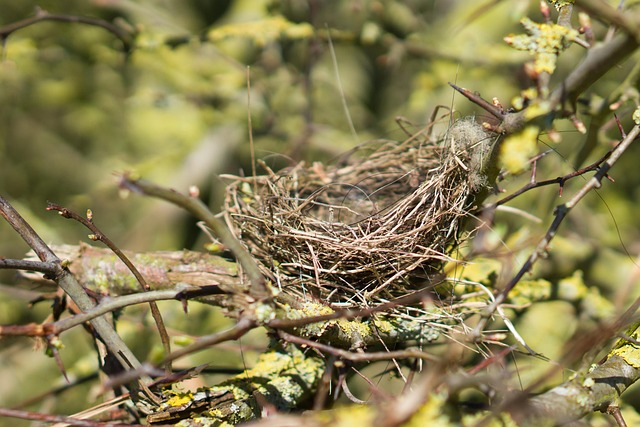Residential bird nest removal requires understanding the ecological value of different nest types and adopting humane, ethical practices. By carefully identifying, documenting, and observing nests, especially during active seasons, one can ensure minimal distress to birds while complying with wildlife protection laws. Post-removal, proactive measures like regular inspections, trimming, securing openings, and using humane deterrents prevent future nesting, fostering a harmonious coexistence between humans and birds in residential and commercial spaces.
“In many parts of the world, bird nests in homes and businesses are a common occurrence, yet their removal often sparks debate due to ethical concerns. This article explores the humane and ethical approach to residential bird nest removal, focusing on understanding different types of nests and their ecological significance. We delve into why safe and non-harmful methods are essential for both humans and birds, offering a step-by-step guide for professionals and practical tips for homeowners and businesses to prevent future nesting.”
Understanding Bird Nests: Types and Their Importance
Bird nests are intricate structures that serve as vital habitats for many avian species. Understanding different types of nests and their ecological significance is essential when considering residential bird nest removal. Nests can vary widely in structure, material, and placement, reflecting the diverse needs and behaviors of various bird species. Some common types include cup-shaped nests woven from twigs and grass, platform nests built on branches, and hollowed-out cavities in trees or buildings.
Each type offers unique benefits to birds, providing protection from predators, extreme weather, and shelter for raising young. Removing a nest without proper knowledge can disrupt these vital habitats, potentially leading to distress for the nesting parents and negative ecological impacts. Therefore, when seeking residential bird nest removal services, it’s crucial to prioritize humane and ethical practices that consider both the safety of birds and the preservation of biodiversity.
The Ethical Approach: Why Safe and Humane Removal is Crucial
In the context of residential bird nest removal, adopting a safe and humane approach is not just a moral obligation but also a practical necessity. Birds play a vital role in our ecosystem, contributing to biodiversity and serving as indicators of environmental health. When addressing bird nests, it’s crucial to respect their place in the natural order while ensuring the safety of both the birds and human residents or employees.
Ethical removal practices involve careful observation to identify the species and assess the nest’s maturity, which dictates the best course of action. For active nests, gentle persuasion and expert intervention are employed to relocate the birds to more suitable habitats, avoiding any harm or disruption to their life cycles. This approach not only minimizes stress for the birds but also prevents potential legal issues associated with cruelty towards wildlife, ensuring a harmonious coexistence between humans and nature in residential and commercial settings.
Step-by-Step Guide to Residential Bird Nest Removal
Removing a bird nest from your home or business should be done humanely and ethically, prioritizing the safety of both the birds and yourself. Here’s a step-by-step guide for residential bird nest removal:
1. Identify the Nest: Begin by carefully examining the structure to confirm it’s a bird nest. Look for materials like twigs, grass, or feathers. Note the location and assess if it poses an immediate threat, such as being too close to a window or fire hazard.
2. Document and Observe: Take photos of the nest and keep a safe distance to observe the birds’ behavior. Most importantly, ensure that adult birds are not present to avoid causing distress or injury. This is crucial for both your safety and the bird’s well-being.
Preventing Future Nests: Tips for Homeowners and Businesses
To prevent future bird nests, homeowners and businesses should implement a few key strategies after removing existing nests. This includes regularly inspecting your property for any signs of nesting, especially during spring and summer months when birds are most active. Trimming trees and shrubs—especially those close to windows or entries—can deter birds from returning. Additionally, ensuring all openings and vents are securely closed can prevent birds from constructing new nests.
Using humane methods like decoy nests or bird spikes can also be effective. Decoys simulate the presence of other birds, discouraging actual birds from nesting. Spikes physically discourage birds by preventing them from perching or building nests on surfaces. Regular maintenance and these proactive measures will go a long way in ensuring residential bird nest removal is not needed frequently and that your property remains free from unwanted avian visitors.
In conclusion, responsible and ethical bird nest removal is a crucial practice for maintaining a safe, healthy living environment. By understanding different bird nests, adopting humane practices, and following step-by-step guidelines, homeowners and businesses can ensure the well-being of these creatures while effectively addressing nest presence. Implementing preventive measures further reinforces this balanced approach to residential bird nest removal, fostering a harmonious coexistence between humans and wildlife.
